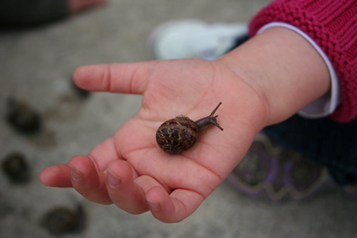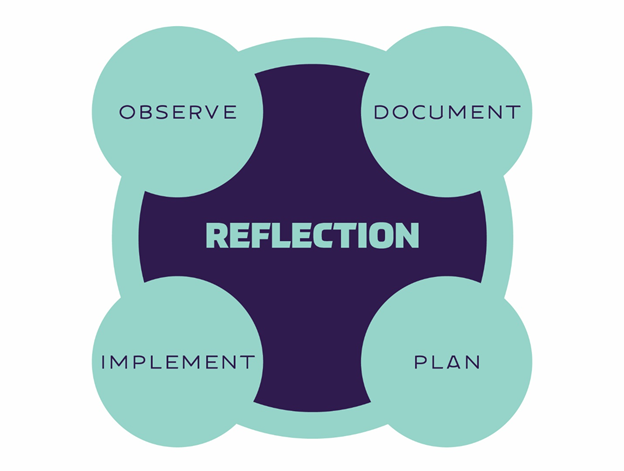8.2: Appropriately Challenging
- Page ID
- 206704
\( \newcommand{\vecs}[1]{\overset { \scriptstyle \rightharpoonup} {\mathbf{#1}} } \)
\( \newcommand{\vecd}[1]{\overset{-\!-\!\rightharpoonup}{\vphantom{a}\smash {#1}}} \)
\( \newcommand{\id}{\mathrm{id}}\) \( \newcommand{\Span}{\mathrm{span}}\)
( \newcommand{\kernel}{\mathrm{null}\,}\) \( \newcommand{\range}{\mathrm{range}\,}\)
\( \newcommand{\RealPart}{\mathrm{Re}}\) \( \newcommand{\ImaginaryPart}{\mathrm{Im}}\)
\( \newcommand{\Argument}{\mathrm{Arg}}\) \( \newcommand{\norm}[1]{\| #1 \|}\)
\( \newcommand{\inner}[2]{\langle #1, #2 \rangle}\)
\( \newcommand{\Span}{\mathrm{span}}\)
\( \newcommand{\id}{\mathrm{id}}\)
\( \newcommand{\Span}{\mathrm{span}}\)
\( \newcommand{\kernel}{\mathrm{null}\,}\)
\( \newcommand{\range}{\mathrm{range}\,}\)
\( \newcommand{\RealPart}{\mathrm{Re}}\)
\( \newcommand{\ImaginaryPart}{\mathrm{Im}}\)
\( \newcommand{\Argument}{\mathrm{Arg}}\)
\( \newcommand{\norm}[1]{\| #1 \|}\)
\( \newcommand{\inner}[2]{\langle #1, #2 \rangle}\)
\( \newcommand{\Span}{\mathrm{span}}\) \( \newcommand{\AA}{\unicode[.8,0]{x212B}}\)
\( \newcommand{\vectorA}[1]{\vec{#1}} % arrow\)
\( \newcommand{\vectorAt}[1]{\vec{\text{#1}}} % arrow\)
\( \newcommand{\vectorB}[1]{\overset { \scriptstyle \rightharpoonup} {\mathbf{#1}} } \)
\( \newcommand{\vectorC}[1]{\textbf{#1}} \)
\( \newcommand{\vectorD}[1]{\overrightarrow{#1}} \)
\( \newcommand{\vectorDt}[1]{\overrightarrow{\text{#1}}} \)
\( \newcommand{\vectE}[1]{\overset{-\!-\!\rightharpoonup}{\vphantom{a}\smash{\mathbf {#1}}}} \)
\( \newcommand{\vecs}[1]{\overset { \scriptstyle \rightharpoonup} {\mathbf{#1}} } \)
\( \newcommand{\vecd}[1]{\overset{-\!-\!\rightharpoonup}{\vphantom{a}\smash {#1}}} \)
\(\newcommand{\avec}{\mathbf a}\) \(\newcommand{\bvec}{\mathbf b}\) \(\newcommand{\cvec}{\mathbf c}\) \(\newcommand{\dvec}{\mathbf d}\) \(\newcommand{\dtil}{\widetilde{\mathbf d}}\) \(\newcommand{\evec}{\mathbf e}\) \(\newcommand{\fvec}{\mathbf f}\) \(\newcommand{\nvec}{\mathbf n}\) \(\newcommand{\pvec}{\mathbf p}\) \(\newcommand{\qvec}{\mathbf q}\) \(\newcommand{\svec}{\mathbf s}\) \(\newcommand{\tvec}{\mathbf t}\) \(\newcommand{\uvec}{\mathbf u}\) \(\newcommand{\vvec}{\mathbf v}\) \(\newcommand{\wvec}{\mathbf w}\) \(\newcommand{\xvec}{\mathbf x}\) \(\newcommand{\yvec}{\mathbf y}\) \(\newcommand{\zvec}{\mathbf z}\) \(\newcommand{\rvec}{\mathbf r}\) \(\newcommand{\mvec}{\mathbf m}\) \(\newcommand{\zerovec}{\mathbf 0}\) \(\newcommand{\onevec}{\mathbf 1}\) \(\newcommand{\real}{\mathbb R}\) \(\newcommand{\twovec}[2]{\left[\begin{array}{r}#1 \\ #2 \end{array}\right]}\) \(\newcommand{\ctwovec}[2]{\left[\begin{array}{c}#1 \\ #2 \end{array}\right]}\) \(\newcommand{\threevec}[3]{\left[\begin{array}{r}#1 \\ #2 \\ #3 \end{array}\right]}\) \(\newcommand{\cthreevec}[3]{\left[\begin{array}{c}#1 \\ #2 \\ #3 \end{array}\right]}\) \(\newcommand{\fourvec}[4]{\left[\begin{array}{r}#1 \\ #2 \\ #3 \\ #4 \end{array}\right]}\) \(\newcommand{\cfourvec}[4]{\left[\begin{array}{c}#1 \\ #2 \\ #3 \\ #4 \end{array}\right]}\) \(\newcommand{\fivevec}[5]{\left[\begin{array}{r}#1 \\ #2 \\ #3 \\ #4 \\ #5 \\ \end{array}\right]}\) \(\newcommand{\cfivevec}[5]{\left[\begin{array}{c}#1 \\ #2 \\ #3 \\ #4 \\ #5 \\ \end{array}\right]}\) \(\newcommand{\mattwo}[4]{\left[\begin{array}{rr}#1 \amp #2 \\ #3 \amp #4 \\ \end{array}\right]}\) \(\newcommand{\laspan}[1]{\text{Span}\{#1\}}\) \(\newcommand{\bcal}{\cal B}\) \(\newcommand{\ccal}{\cal C}\) \(\newcommand{\scal}{\cal S}\) \(\newcommand{\wcal}{\cal W}\) \(\newcommand{\ecal}{\cal E}\) \(\newcommand{\coords}[2]{\left\{#1\right\}_{#2}}\) \(\newcommand{\gray}[1]{\color{gray}{#1}}\) \(\newcommand{\lgray}[1]{\color{lightgray}{#1}}\) \(\newcommand{\rank}{\operatorname{rank}}\) \(\newcommand{\row}{\text{Row}}\) \(\newcommand{\col}{\text{Col}}\) \(\renewcommand{\row}{\text{Row}}\) \(\newcommand{\nul}{\text{Nul}}\) \(\newcommand{\var}{\text{Var}}\) \(\newcommand{\corr}{\text{corr}}\) \(\newcommand{\len}[1]{\left|#1\right|}\) \(\newcommand{\bbar}{\overline{\bvec}}\) \(\newcommand{\bhat}{\widehat{\bvec}}\) \(\newcommand{\bperp}{\bvec^\perp}\) \(\newcommand{\xhat}{\widehat{\xvec}}\) \(\newcommand{\vhat}{\widehat{\vvec}}\) \(\newcommand{\uhat}{\widehat{\uvec}}\) \(\newcommand{\what}{\widehat{\wvec}}\) \(\newcommand{\Sighat}{\widehat{\Sigma}}\) \(\newcommand{\lt}{<}\) \(\newcommand{\gt}{>}\) \(\newcommand{\amp}{&}\) \(\definecolor{fillinmathshade}{gray}{0.9}\)Course Competency 8. Develop STEM learning experience plans that promote child development and learning
CRITERIA 8.2 Plan is relevant, meaningful, and appropriately challenging
8.2. Plan is Relevant, Meaningful, and Appropriately Challenging
Course Competency Criteria 8.2 plan is relevant, meaningful, and appropriately challenging aligns with Developmentally Appropriate Practice Area of Knowledge number 2. Individual-Appropriateness. Remember, this is using what is known about each child as an individual to be responsive to each child. More specific examples of this include: What is known about the strengths, interests, and needs of each individual child in the group: [Necessary] to be able to adapt and be responsive to inevitable individual variation.
1. Each child is unique and can succeed.
2. Learning occurs within the context of relationships.
4. Children learn best when they are emotionally and physically safe and secure.
Once again, by observing the children in the group, teachers can plan learning experiences and activities that are individually appropriate for the group of children and individual children in the group by noticing their interests and developmental levels. Remember the Zone of Proximal Development (ZPD) from Vygotsky. Children learn best when the activities and learning experiences are just slightly above their current level of development and they have the guidance and support of a More Knowledgeable Other (MKO), meaning we don't want the activities to be too easy or boring for them or overly difficult or too challenging for them.
To begin to understand how to plan effective, developmentally appropriate curriculum for children, we must look at the context in which that planning should happen. Planning everything, from the flow of the day, to how teachers design and stock the classroom environment, to the way the spontaneous (unplanned) experiences of children are recognized and valued, to the experiences teachers thoughtfully plan and intentionally implement, happens in a continuous cycle. As we will discuss in this chapter that cycle begins with observing and continues through documenting what was observed, reflecting on what it means and how to plan to best support children, and then implementing those plans, before returning back to observing.[1]
Planning curriculum for young children begins with teachers discovering, through careful listening and observation, each child’s development. Observation is an essential skill for a teacher. When teachers mindfully observe, they discover how individual children make meaning in everyday moments of play and interactions and how to deepen their relationships with children. Observing for the purpose of assessing individual children’s learning means carefully watching and listening, with thought and reflection. In doing so, teachers find the knowledge, awareness, and strategies that individual children have formed during their experiences. It may be evidence that pertains to individual children’s emotional, social, cognitive, or physical development. If the evidence is clear and significant, teachers can preserve it through, for example, a note, a photo, or a sample of a child’s work.
Consider this example in which teachers found various ways in which the children’s engagement in learning about snails related to the developmental profiles of different children:
As the children’s interest in the snails continued, the teachers looked for ways to expand learning opportunities and integrate them into the multifaceted experience. The teachers also reviewed individual children’s developmental profiles to be mindful of children’s developmental progress in different areas. In addition to the many counting opportunities in the environment, the teachers decided to integrate counting into the children’s exploration of snails. Younger children who were making progress with learning to count objects between five and ten were invited to set up a specific number (less than ten) of trays and snails.
Before the children started, the teachers reminded them of an earlier conversation about how to care for snails. In response, one of the children asked to show the others how to handle the snails gently. (Learning about counting was happening at the same time as learning about controlling the impulse to handle other creatures roughly instead of being gentle with them.) Teachers suggested to other children who were continuing to make progress with counting to count out a quantity of sticks, bark, or leaves greater than ten. Other children were asked to divide the snails evenly between the trays. The children kept saying to themselves, “Be gentle,” and handled the snails with great care.

As teachers observed each group, they helped children develop mathematical thinking by prompting them and asking questions. For example, at one table, a teacher noticed that children were counting some sticks twice. She said, “I wonder what would happen if we put each stick on the other side of the tray after counting it.” The children tried out this idea. Teachers noted children’s efforts and placed the notes, with the date recorded, into the children’s individual portfolios to be used as evidence for later reference when considering developmental progress relating to number sense and impulse control.
As teachers observe children’s play and interactions, they discover ways to support children’s learning. Ideas for the next steps in curriculum planning emerge as teachers reflect on how they might extend or expand children’s thinking, language, and interactions. Observation, reflection, and documentation in the moment simultaneously launch an ongoing assessment of each child’s progress in learning as well as the curriculum planning cycle.[3]
Here is a visual representation of the Curriculum Planning Cycle


